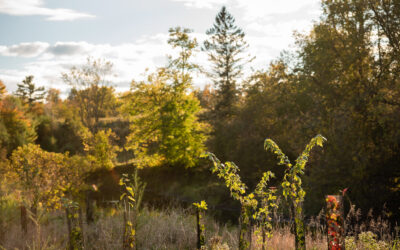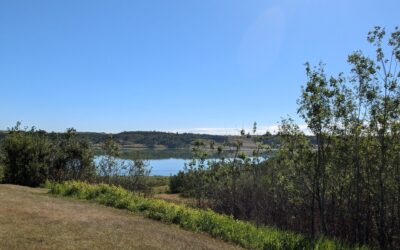ALUS WUQWATR participants Murray and Warren Wild steward acres of native grasslands, wetlands and riparian zones in Saskatchewan.
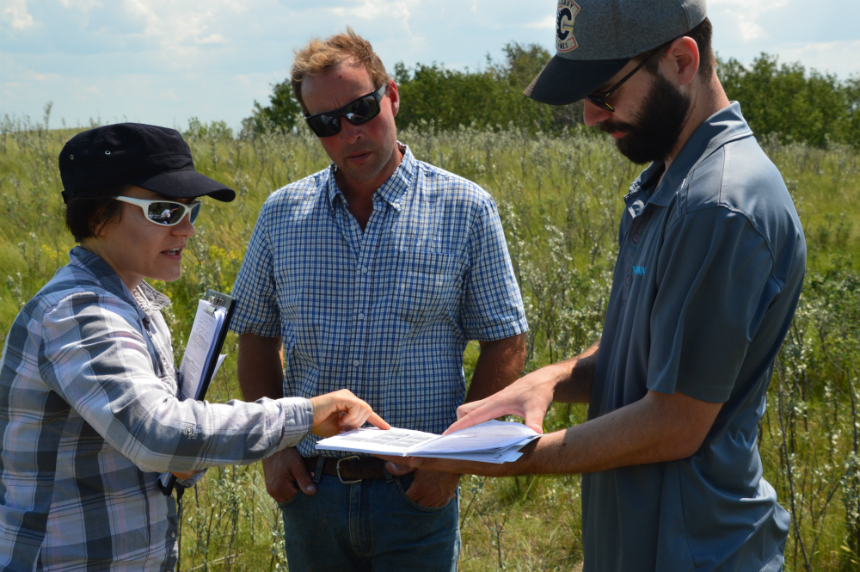
“The Wilds really understand the importance of native grasslands for boosting biodiversity,” says ALUS WUQWATR coordinator Folly Baugh (on right), with ALUS WUQWATR participant Murray Wild (centre) and Nadia Mori of Saskatchewan’s Ministry of Agriculture (on left). “They were converting tame pasture to native grasses even before they knew about ALUS!”
ALUS WUQWATR participants Murray and Warren Wild grow grain and oilseeds and manage livestock on their mixed farm near Last Mountain Lake, Saskatchewan.
They are also proud stewards of acres of native grasslands, wetlands and riparian zones to boost biodiversity, protect water quality and produce many other ecosystem services important to the community at large.
Soon after expanding the family’s construction business to pursue their passion for agriculture, the brothers began to understand the importance of balancing the needs of the environment with their farming practices.
They started working to increase the biodiversity of their pasturelands, a path that led them straight to ALUS.
“The Wilds really understand the importance of native grasslands for boosting biodiversity,” says ALUS WUQWATR coordinator Folly Baugh. “They were converting tame pasture to native grasses even before they knew about ALUS! They’ve had very good success with their native seed mixes.”
Since 2017, ALUS has helped the Wilds plant 30 acres of native grasses and forages, following a creek that meanders across their land.
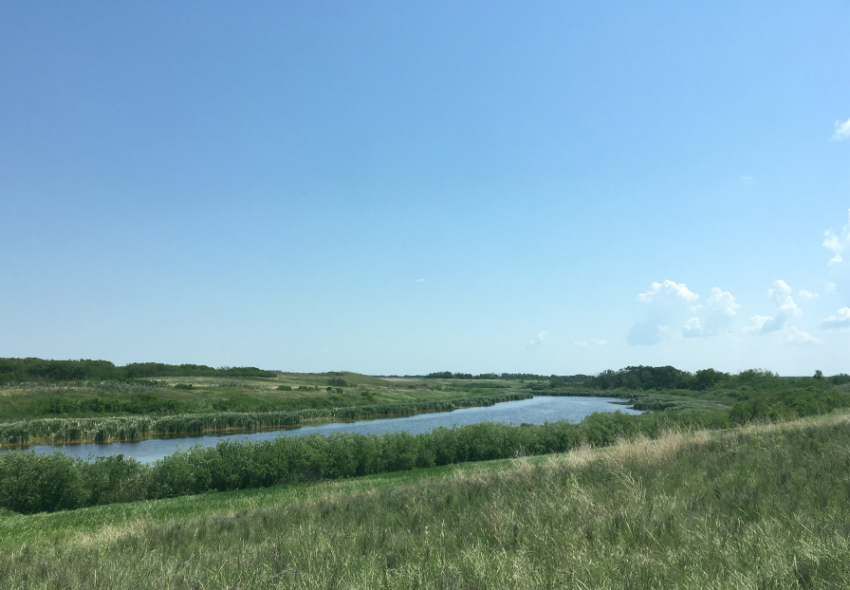
Since 2017, ALUS has helped the Wilds plant 30 acres of native grasses and forages, following a creek that meanders across their land. They also enhanced more than three acres of wetlands and another three acres of riparian buffer zones, by stabilizing stream banks and seeding salt-tolerant grass species to help reduce the salinity of the land.
They also enhanced more than three acres of wetlands and another three acres of riparian buffer zones, by stabilizing stream banks and seeding salt-tolerant grass species to help reduce the salinity of the land.
The riparian area is a transitional zone between land, such as a farm field or pasture, and water, such as a stream, slough, wetland, river or lake. When enhanced and properly managed, it can filter sediment and pollutants from surface water, to help produce cleaner water for the community.
“It’s great to see shorebirds using those riparian zones,” says Murray Wild.
Returning the riparian area to a healthy functioning state with adjacent native grasses is an important part of improving water quality—not just on the Wild’s property and their surroundings, but also downstream in Last Mountain Lake, an important recreational destination.
In July 2018, ALUS WUQWATR organized a tour of the Wild brothers’ ALUS projects, giving them the opportunity to show off the hard work and pride that has gone into each acre of their ALUS projects.
While on site, Murray Wild and the group discussed the importance of ongoing project management to maintain a healthy functioning landscape that produces ecosystem services, such as cleaner air, cleaner water and more wildlife habitat.
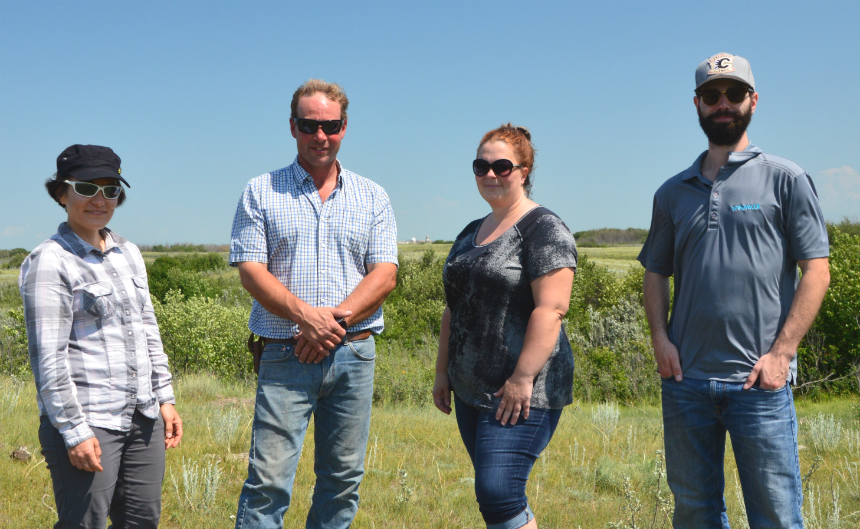
In July 2018, ALUS WUQWATR participants Murray and Warren Wild hosted a tour of the ALUS projects on their mixed farm near Last Mountain Lake, Saskatchewan. Here, from left to right: Nadia Mori (Range Management Extension Specalist at Saskatchewan’s Ministry of Agriculture), Murray Wild (ALUS WUQWATR participant), Lori Muric (Technician, Lower Qu’Appelle Watershed Stewards) and Folly Baugh (ALUS WUQWATR Program Coordinator), pause a moment while discussing the progress of the Wild brothers’ native grasslands project.

